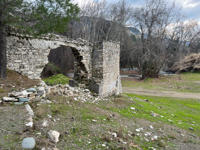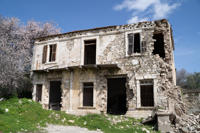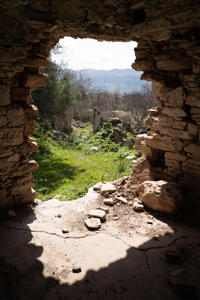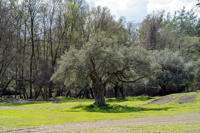Vretsia
Nestled in the mountainous region of Paphos, Cyprus, lies the serene and picturesque village of Vretsia. Situated 38 kilometers northeast of Paphos at an altitude of 590 meters above sea level, Vretsia is bordered by Pano Panagia to the north, Milikouri to the east, Agios Ioannis to the south, and Koilinia to the west. The village has a rich history dating back to ancient times, making it an attractive destination for tourists seeking to explore the culture and heritage of the region.
The area of Vretsia has been inhabited since ancient times, with excavations revealing the remains of an Epipaleolithic camp. Numerous artifacts such as heavily burnt stone objects and tools, potsherds, raw materials, beads, millstones, and percussion instruments have been found in the area. The village has also been associated with Greek mythology, with King Kinyras reputedly building a settlement in the area at the request of his youngest daughter, Brasias. A temple dedicated to Aphrodite was built in the center of the settlement.
The arrival of Christianity in Cyprus led to the people of Vretsia covering the temple of Aphrodite with soil to protect it. The settlement was then moved further west to its current location. During the Frankish rule, Vretsia became a fiefdom, and during the Turkish occupation, the Christian inhabitants of the village were forced to become linen cotton (crypto-Christian) to escape Ottoman oppression and tyranny. As a result, they renamed their settlement Bretsia, and in 1958, the Turkish Cypriot inhabitants adopted the alternative name Dagasan, meaning people who overcome the mountain.
Until 1974, Vretsia's population consisted mainly of Turkish Cypriots, with few Greek Cypriots residing in the village. During the Turkish invasion of the same year, Turkish Cypriot fighters in Vretsia refused to surrender to Greek Cypriot forces, who attempted to disarm the Turkish Cypriot communities. After the ceasefire in August 1974, many residents of Vretsia fled through the mountains to northern Cyprus, which was under the control of the Turkish army. The remaining residents of the village were moved to areas occupied by Turkish troops on September 1, 1975, accompanied by UNFICYP. They settled in various areas such as Lapithos, Neo Chorio, Zodeia, Katokopia, Famagusta, Nicosia, Kyrenia, and Morphou.
Today, Vretsia is sparsely populated, with only one resident recorded in the 2011 census. However, the village's scenic beauty and rich history continue to attract tourists from around the world. Visitors can explore the ancient ruins and artifacts of the village, take in the stunning views of the surrounding mountains and valleys, and experience the local cuisine and culture. The village also provides a peaceful and tranquil retreat from the hustle and bustle of urban life, with plenty of opportunities for hiking, bird-watching, and other outdoor activities.
In conclusion, Vretsia village is a hidden gem waiting to be explored by those seeking to experience the rich history and scenic beauty of Cyprus. Despite its sparse population, the village's cultural and natural heritage, combined with its tranquil and peaceful setting, make it an ideal destination for tourists seeking to escape the stresses of modern life. Whether you are a history buff, a nature lover, or simply seeking a peaceful retreat, Vretsia has something to offer everyone.
General Information
Ratings
Spectacular
1
Fantastic
0
Enjoyable
0
Average
0
Terrible
0
5.0









